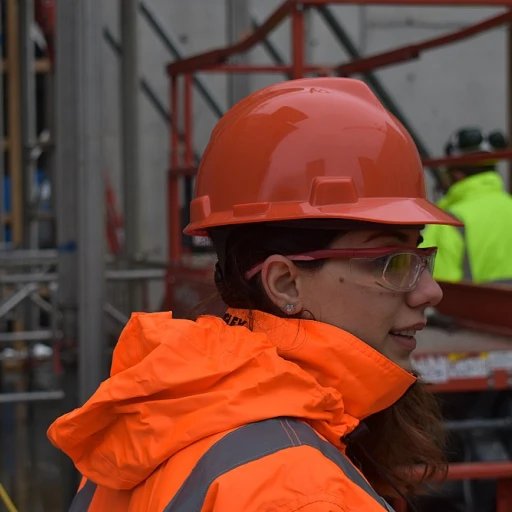
The Evolution of Background Checks
An Overview of the Transformation in Background Check Procedures
The process of conducting background checks has significantly evolved over time, becoming an integral part of various sectors. Initially, these checks primarily served to validate credentials and past employment records. However, as the professional landscape has grown more complex, so too has the need for thorough and nuanced assessments. This progression aligns with the increasing importance of sample schedule risk assessment. Today, background checks incorporate more sophisticated risk assessments. This evolution has been driven by a variety of factors including enhanced awareness of potential risks, regulatory demands, and the critical need for risk mitigation strategies in project management. As organizations strive to understand possible future risks, they are turning towards advanced methodologies like a risk matrix and Monte Carlo simulations for their projects. Incorporating a schedule risk analysis allows project managers to gain a clearer insight into potential cost and duration impacts, enhancing the overall effectiveness of risk management activities. This approach helps in identifying critical path elements and assessing risks that might affect project timelines and outcomes. Project teams are now more focused on understanding the likelihood and impact of risk events. This proactive step in the background check process can lead to more informed decision-making and increased confidence levels in project delivery. Essentially, the integration of a more robust and structured risk assessment helps in addressing both potential and existing challenges, offering a comprehensive view that improves both the reliability and management of background checks. For more details on the transformation of background check procedures and their complexities, you may refer to this comprehensive analysis.What is a Sample Schedule Risk Assessment?
The Role of Sample Schedule Risk Assessment
The concept of a "sample schedule risk assessment" in the domain of background checks is integral to understanding and managing a project's potential risks effectively. A key component, this assessment focuses primarily on analyzing the project's schedule to identify, quantify, and mitigate risks that could impact the project's success.
Essentially, it involves a thorough examination of the activities in the project schedule to pinpoint any risk events that might affect the duration or cost. Utilizing tools like the risk register and risk matrix, project managers can assess the likelihood and impact of these risks. By evaluating these risk factors, they are better equipped to establish a level of confidence in the project timeline and the likelihood of meeting project objectives.
Advanced techniques, such as Monte Carlo simulations, provide a quantitative aspect to the risk assessment process, enabling management to foresee various potential outcomes and prepare adequate risk response plans. This proactive approach is crucial for cost schedule management and ensuring the project remains on the critical path.
The incorporation of sample schedule risk assessment in project management allows for a more structured and methodical analysis, enhancing the ability to pinpoint critical activities that may require more rigorous evaluation or contingency planning. As we delve further into the complexities of background check trends, a deeper understanding of this assessment can offer significant insights, as outlined in our blog on background check complexities.
Key Components of Risk Assessments in Background Checks
Key Elements of Effective Sample Schedule Risk Assessments
Understanding the components of risk assessments is essential for implementing effective background check procedures. Sample schedule risk assessments seek to mitigate potential delays and disruptions by identifying risks early in the project management process. Here's a breakdown of these key elements:- Risk Identification: The first critical step involves identifying potential risks that may impact the schedule. This is achieved through both qualitative and quantitative analysis methods, aiming to highlight potential risk events that could affect project deadlines.
- Risk Analysis: Once risks are identified, the project team performs a risk analysis to determine their likelihood and impact. This involves using risk matrices or Monte Carlo simulations to evaluate various scenarios' probability and potential consequences on the project's schedule.
- Risk Register: This component acts as a comprehensive record of identified risks, including their analysis results, plans for mitigation, and monitoring measures. Maintaining a detailed risk register is a vital part of the risk management strategy.
- Schedule Impact Assessment: The assessment evaluates how identified risks might affect the project schedule and provides project managers with the tools to adjust timelines if necessary. This includes analyzing the critical path and its associated activities to foresee any deviations that might increase costs or duration.
- Risk Mitigation Strategies: An effective risk assessment process will encompass strategies to mitigate identified risks, such as adjusting resources, redistributing activities, or implementing contingent plans. These strategies must be flexible and adaptable to manage uncertainties efficiently.
- Monitoring and Review: Ongoing analysis and review of risk events are crucial to maintain high confidence levels in the project schedule. Regular updates to the risk register enable project managers to respond rapidly to emerging challenges and sustain project momentum.
Challenges in Implementing Risk Assessments
Encountering Hurdles in Effective Risk Assessment Implementation
The execution of sample schedule risk assessments in background checks is not without its fair share of obstacles. One significant challenge is accurately integrating risk, schedule, and analysis components within a project framework. Establishing a coherent risk analysis process proves difficult when project managers must align these elements with various activities and their potential impact on cost and duration.- Multidimensional Risk Factors: The complexity of assessing risk involves examining multiple dimensions, including the likelihood of certain risk events and their potential impact. The project team often struggles to maintain a high confidence level when predicting outcomes, making the process more uncertain.
- Dynamic Project Schedules: Project schedules are often dynamic, and as such, they require continuous updates and adjustments. Critical path calculations and cost schedule considerations are subject to frequent changes, complicating the risk assessment efforts.
- Resource Constraints: Effective risk management demands time and resources. Project teams typically face constraints that challenge their ability to conduct thorough assessments, affecting their capacity to respond adequately through risk response strategies.
- Data Limitations and Accuracy: Accurate risk assessment relies heavily on comprehensive data. However, data limitations and the accuracy of risk registers can impede the reliability of the assessment outcomes. Without precise information, risk mitigation steps become less effective.
- Effective Communication: The process relies on effective communication among team members and stakeholders. Miscommunication can lead to alignment issues in risk assessment activities, affecting the critical decisions made during project management.
Technological Advancements and Risk Assessments
Technological Innovations Transforming Screening Processes
The landscape of background checks and risk assessments has seen significant technological advancements that streamline the process and enhance its effectiveness. These innovations enable more precise analysis of schedule risk, integrating various components such as cost, duration, and impact on projects. One of the critical advancements is the adoption of project management software that aids in risk management. These tools allow for comprehensive risk analysis, compiling a risk register, and identifying risk events that may occur during a project's lifecycle. Project managers benefit from such efficiencies as they can now detect potential bottlenecks on the critical path, manage activities in a timely manner, and ensure that the project schedule aligns with expected outcomes. Additionally, technology facilitates the risk assessment process by offering sophisticated risk analysis methods such as Monte Carlo simulations. This approach provides a better understanding of the likelihood impact and helps determine the confidence level for schedule risk. By simulating numerous scenarios, project teams can prepare effective risk response strategies, minimizing impact risk on projects. AI-driven platforms are another breakthrough, allowing for a more thorough assessment of risk factors by analyzing extensive datasets swiftly. This enables project managers to anticipate project risk, quickly updating their strategies to mitigate potential impacts. Moreover, the integration of advanced algorithms into existing project systems fosters transparency and collaboration, empowering all team members involved in the risk response. This ensures that every activity and step taken is aligned with the overall risk management strategy, ultimately boosting confidence in project outcomes. It is clear that as technology continues to evolve, it will further refine how schedule risk assessments are conducted, fortifying the process, saving time, and cost for organizations.Future Trends in Background Check Risk Assessments
Anticipating Future Developments in Risk Assessments for Background Checks
The landscape of background checks continues to evolve, driven by technological advancements and the ever-growing need for robust risk management. As project managers strive for accuracy and efficiency, there is a clear push towards integrating more sophisticated risk assessment techniques.
One of the notable trends is the adoption of advanced data analysis methods. These can enhance the accuracy of schedule risk assessments, helping to identify potential risks within a project's critical path. Tools like Monte Carlo simulations are increasingly popular for their ability to provide a detailed risk analysis, highlighting possible risk events and their likelihood and impact.
A key step in future risk assessments will focus on integrating real-time data, allowing project teams to adapt their strategies based on dynamic conditions. This process promises greater confidence levels, ensuring that the project schedule and project cost remain in check.
Moreover, the implementation of an enhanced risk register that tracks risk response activities will be crucial. By cataloging each risk management activity, project managers can better prepare for potential hurdles and optimize schedule risk mitigation strategies.
As we look ahead, the importance of customizing risk assessments for industry-specific needs cannot be understated. While technology plays a pivotal role, understanding the unique risks and requirements of different sectors will ensure the effective application of these assessments. Investing in continued education and training for project teams will further enhance their capability to handle risk management activities efficiently.
In summary, the future of risk assessment in background checks looks promising with a strong emphasis on integrating technological tools and industry-specific customization. These advancements are set to elevate the quality of background checks, ultimately impacting the project's time, cost, and overall success.












